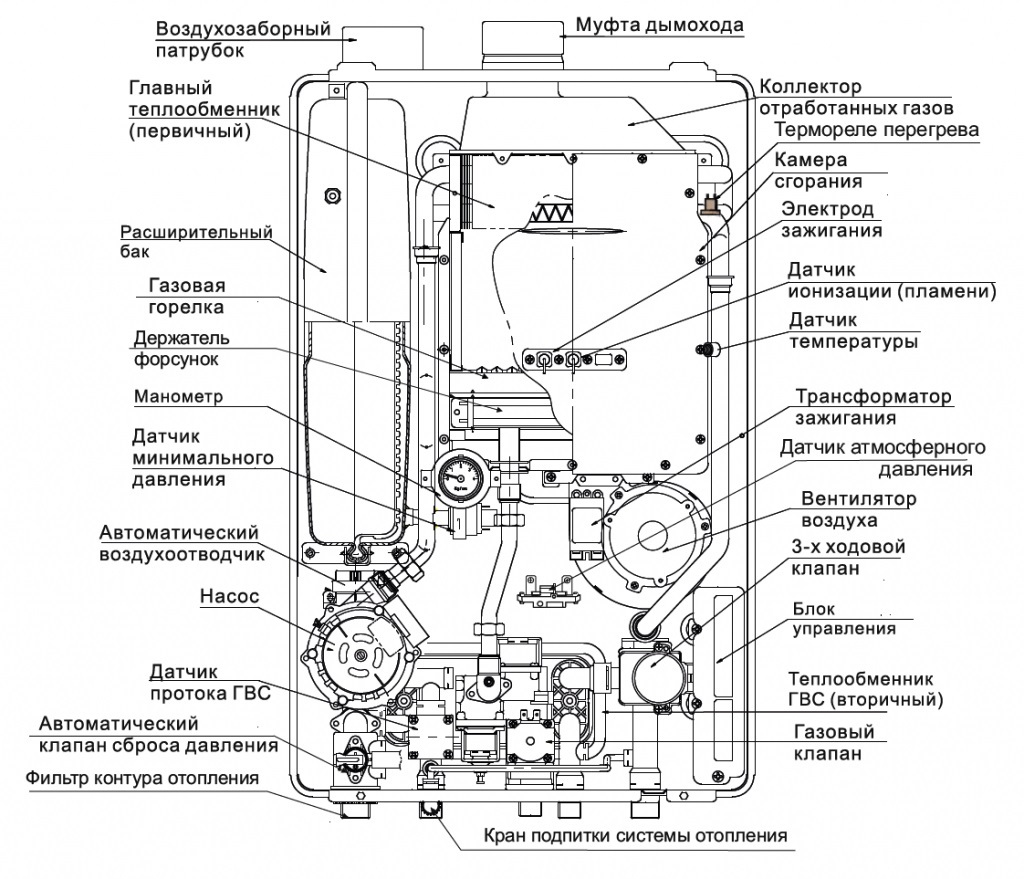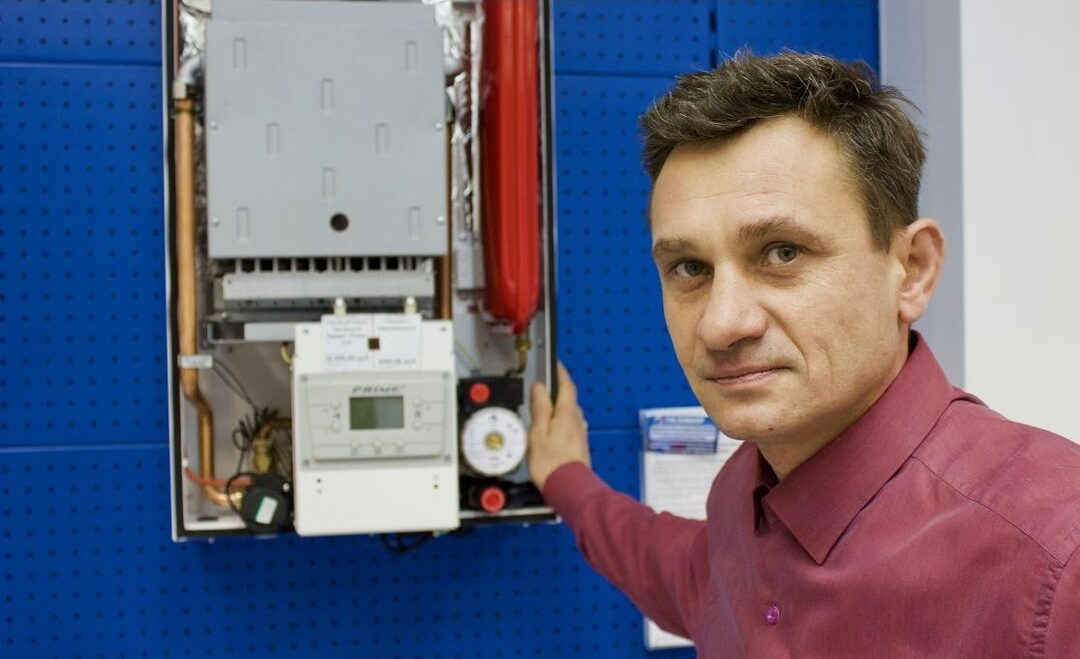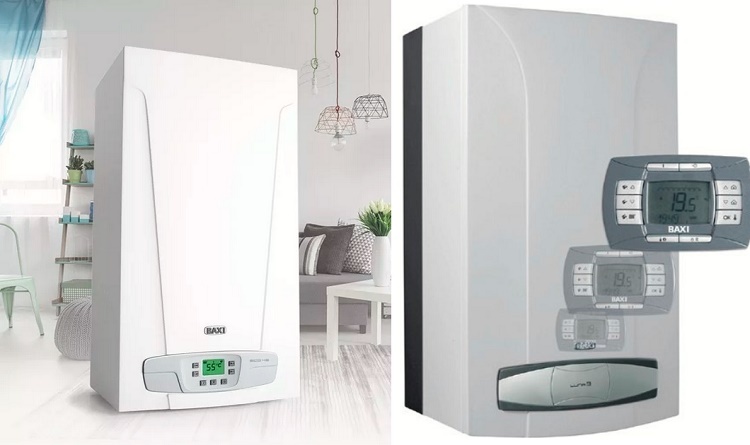In the home appliance market, an induction heating boiler remains a novelty, although the popularity of such an innovative solution is growing rapidly. Among electric boilers the share of induction models accounts for about 30%. How does this unit differ from its competitors with conventional heating elements or electrodes?
We will tell you all about the principle of operation and the unique advantages of equipment based on the use of induction. In the article we have proposed, its varieties are given and described in detail. Our installation tips will help you easily equip or upgrade the heating system of a cottage, shop or warehouse.
The content of the article:
-
Design and operation features
- The device of the induction unit
- Specifics of use in heating circuits
- Varieties of induction boilers
- What do you need to know about installation?
- Advantages of induction heating boilers
- Disadvantages of induction models
- Equipment selection rules
- Conclusions and useful video on the topic
Design and operation features
An induction boiler is able to generate heat and heat rooms thanks to electromagnetic induction. This physical phenomenon was discovered by Faraday during his experiments with a cylindrical magnetic bar, around which a copper wire was wound in the form of a spiral.
The device of the induction unit
A modern induction heating boiler also includes an inductor and a core. When an alternating electric current passes through a coil, an electromagnetic field is generated.
The field generates eddy electric currents that heat the core, the heat from which is transferred to the coolant. The amount of this heat is determined by the Joule-Lenz formula.
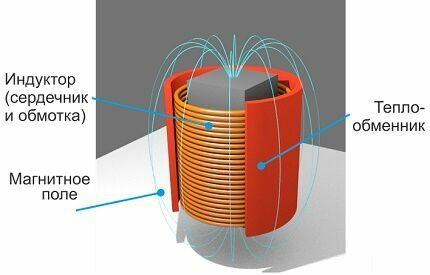
The induction heating boiler is a complex multi-component unit. To better understand the principle of operation of an induction device, it is worth remembering a school physics course
The induction heating boiler consists of two main parts. In one of them, consisting of a coil and a core, a magnetic field is formed. The second part is a heat exchanger with a working fluid (coolant).
The function of the heat carrier is performed by ordinary water or a mixture of water and ethylene glycol. It is possible to use other liquids, the choice of which depends on the specific model of the boiler.
The heating system with an induction boiler always turns on at closed circuit. The installation diagram also includes a membrane tank, which is necessary to receive excess water, which occurs due to its thermal expansion. If such a tank is not included in the package, it is purchased separately.
Specifics of use in heating circuits
Induction boilers are designed to work in a forced circulation system. Therefore, the connection diagram must contain circulation pump, stimulating the movement of the working fluid along the heating circuit.
This need is due to the relatively small volumes of heat exchangers – due to rapid heating, the water in them boils faster than gravitational circulation occurs.

Induction boilers are supplied complete with a remote control unit designed to automate the operation of heating equipment
In multi-circuit systems, circulation pumps are installed on each circuit. If a floor heating system works in the house, then the distribution manifold and an additional pump should be included.
The boiler control system includes, in addition to the thermostat and temperature sensors, the so-called security group, which is designed to prevent overheating, overpressure and tensile strength of parts.
The safety group usually includes a pressure gauge, air vents and safety valves. Surge protection is implemented by automatic components. The processing of individual parts with a compound increases their security. Thanks to the protection components, safe and uninterrupted operation of the boiler is ensured.
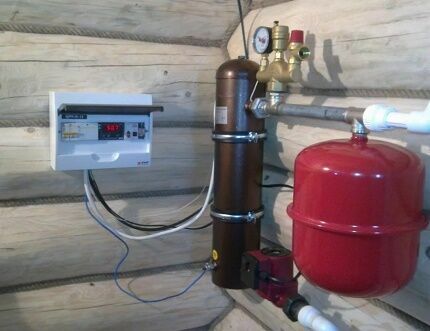
The assembly diagram of the heating system with an induction boiler must include an expansion tank and a safety group that prevents excess pressure in a closed circuit
Household induction boilers, depending on the rated power, operate on a voltage of 220 V or 380 V at a current frequency of 50 Hz. To electric boiler connected to the grid, you will need to notify the local power company (electricity supplier) and obtain their approval.
The connection can be single or three phase. The wires used to connect the power supply must have the appropriate cross section.
In an induction appliance, the heating is controlled by cycling it on and off. This process is assisted temperature sensors (thermocouple) included in the control system.
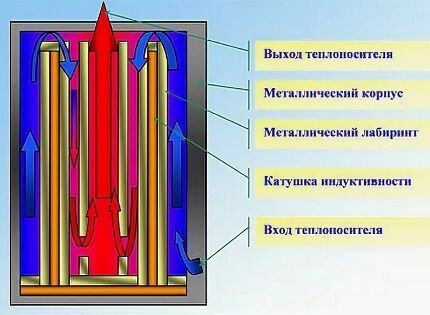
An induction boiler in a section showing the direction of movement of the coolant. In a cold state, the coolant enters through the lower pipe and after heating is supplied through the upper pipe to the heating system
The user sets the optimal temperature regime and the boiler, after heating the coolant to a certain temperature, automatically turns off, and after cooling it turns on again.
Thanks to the continuous heating cycle of the coolant, a comfortable microclimate is maintained in heated rooms. In many models, data on temperature and other operating parameters are displayed, which makes it easier to control the operation of the equipment.
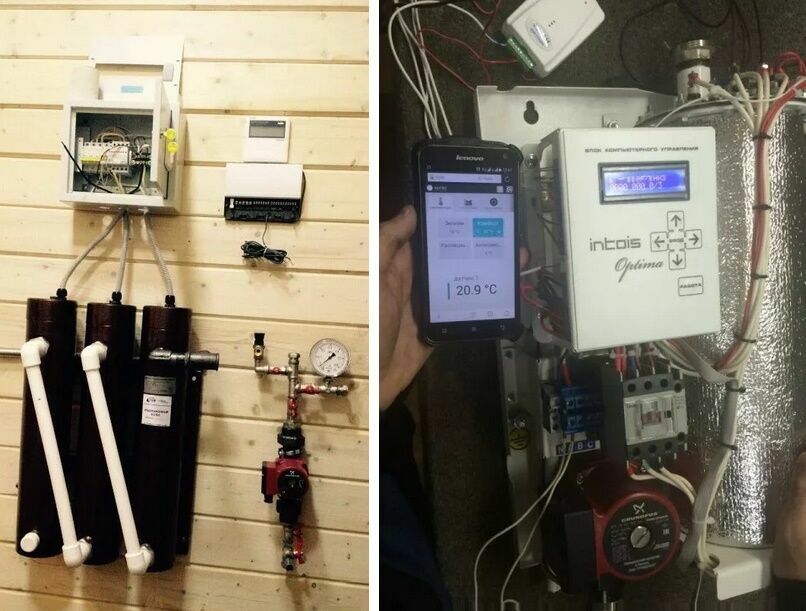
Optionally, induction heating boilers are equipped with GSM modules to control the temperature in the room and control it via a smartphone from anywhere in the world where the Internet is available. Returning from vacation or business trip, you can turn on the heating system in advance and prepare the house for arrival
Varieties of induction boilers
All models of induction boilers work on the same principle, but there are differences in their design. According to this criterion, they are conditionally divided into several types, which will be discussed below.
Casing boilers. The boiler casing has a cylindrical shape. The casing contains an inductor. A heat exchanger passes both inside and outside the coil.
The working fluid entering the inlet pipe passes through the heat exchanger, heats up and enters the heating circuit through the upper pipe. Boilers casing type in Russia produces NPC «INERA». In the market they are known under the brand name SAV.
Boilers with bulk heat exchangers. This type of boiler is also called inductive-conductive. The unit has a metal case in the form of a cylinder.
The housing contains an induction coil with a ferromagnetic rod, which acts as a heat exchanger. Inductively-conductive boilers on the market are represented by the VIN series. Manufacturer – plant of thermal equipment "Alternative Energy".
Boilers with tubular heat exchanger. Classic induction boilers have a heat exchanger in the form of a set of pipes that wrap around an inductor. This unit was the first on the market.
Induction boilers with inverters. The induction boiler can be supplemented with an inverter, in which the direct electric current of the batteries is converted into high-frequency alternating current and only then goes to the inductor.
This solution helps to obtain the necessary eddy currents for heat generation in the absence of the main mains supply.
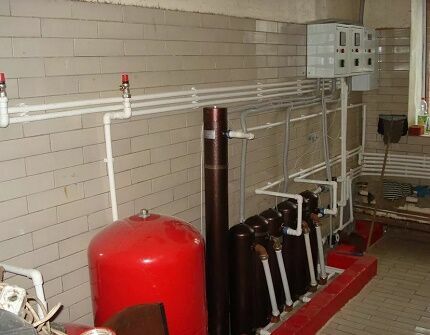
The use of an inverter in a circuit with induction boilers allows you to stabilize the supply of power to electrical equipment and protect it from power surges
What do you need to know about installation?
The delivery set of electrical devices includes a technical passport with a detailed description of the characteristics and instructions, which indicate the rules for installation and operation. The installation of the boilers must be carried out in accordance with the enclosed manual.
In case of shortcomings, for example, if the system does not have a pump for forced circulation, the boiler can be withdrawn from warranty service. Therefore, manufacturers recommend that experienced plumbers or trained employees of the organization that sold the electrical equipment be involved in the installation.
The induction boiler can be built into an existing heating system as either the main or backup when connected in parallel. As for the installation site, be sure to follow the rules standard for all electric heaters.
The heater must be at least 80 cm from the ceiling and floor. The gap with the wall should be at least 30 cm. Like any powerful power equipment, the induction boiler must be grounded in accordance with GOST 12.2.007.0.
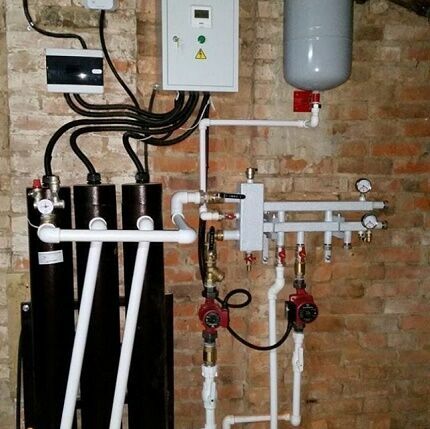
The cross section of the cable used to connect the induction boiler is calculated based on the power of the equipment. Wiring is laid in cable channels or in corrugation
Advantages of induction heating boilers
Induction boilers have many absolute and comparative advantages, including the following:
- the highest efficiency among all electric boilers;
- invariability of energy characteristics;
- minimum requirements for coolant;
- increased reliability;
- record long service life;
- ability to work autonomously;
- simple installation without ventilation system;
- automatic control system;
- no need for delivery and storage of fuel:
- heating the coolant up to 95 degrees;
- high level of security.
The device converts electrical energy into thermal energy with an efficiency of 98-99%. It takes 7-10 minutes to heat up the coolant. With a simple design with no moving mechanical parts, the steel alloys used as construction materials make induction boilers record-breaking durable.
Only damage to such equipment can disable electrical insulation. But as the practice of operating transformers, which in their design are in many ways similar to induction boilers, shows, they are really capable of lasting for many decades.
According to manufacturers, units operating due to the effect of electromagnetic induction, provide uninterrupted space heating for 100 thousand hours, that is, 30 heating seasons. At the same time, their power does not decrease with time, which cannot be said about electrode and conventional heating elements boilers.

Induction boilers can be used both as the main and as additional equipment. For example, prepare a coolant for an irregularly used underfloor heating system
The same reasons that determine the durability and increased reliability of induction heaters also reduce the cost of operation. The induction boiler does not need regular maintenance and repair, which saves money.
Compared to many other fuels, using electricity to heat homes remains the most profitable. Especially it concerns non-gasified settlements.
The design of the certified induction boiler prevents short circuits. Manufacturers claim that any model has the highest class electrical safety. An induction boiler should not be confused with a microwave oven, since a different frequency of electric current is used for its operation.
Heating of the coolant in the induction boiler occurs evenly – temperature difference in the system is not more than 30°С. That is, there are no local overheatings that can lead to a fire, which makes such units fireproof.
Due to the magnetization of the coolant, fine vibration, imperceptible to others and turbulent eddies, in induction boilers practically do not form mineral deposits, which favorably affects efficiency. Recall that a thick layer of scale slows down the speed and efficiency of heating the coolant.
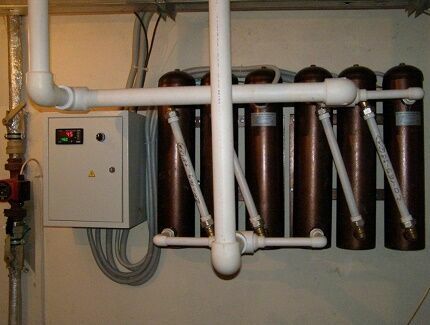
To increase power, a cascade of three or more induction boilers with a common control cabinet can be used. This solution will help to heat a two-story mansion
If you follow the operating rules specified in the instructions, then after installation and setting the temperature regime, you can not remember the boiler throughout the entire heating season. Unlike solid fuel "brothers", induction appliances do not require regular loading of firewood and coal and ash removal. Pipe cleaning is not required, which distinguishes them from other types electric boilers.
The boiler itself and its accessories take up little space and can be installed in a small area. The components of the control system allow the use of induction boilers in one bundle with other climatic equipment.
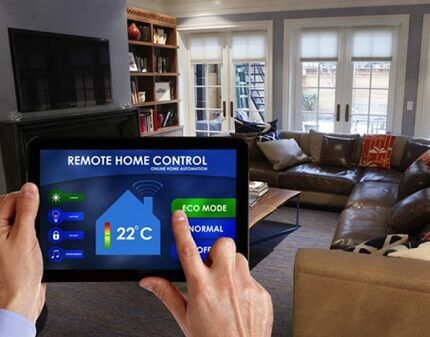
Induction boilers can be integrated into an intelligent home equipment control system called "Smart Home"
Disadvantages of induction models
Ideal technical solutions do not yet exist. Even the most advanced equipment has its drawbacks and an induction heating boiler is no exception.
It is characterized by:
- high price;
- big weight;
- noise.
In the manufacture of induction boilers, expensive materials are used, including ferromagnets that react to a magnetic field.
In order for the boiler to perform its function, engineers must accurately calculate the diameter of the coil wire, the number of turns, the size of the core, and other parameters. Then all these calculations must be implemented in the finished product.
Thus, the production of induction devices is a labor-intensive and metal-intensive process, which causes a high cost of production. At the same time, this drawback is leveled due to the long service life and minimal operating costs.
The compact dimensions of the boiler are combined with its significant weight, which is explained by the large number of steel parts. Some models weigh 40 kg. The induction boiler makes a slight noise during operation, but this disadvantage is easily eliminated by noise-absorbing gaskets recommended for installation.
Equipment selection rules
When choosing a model of an induction boiler, the main criteria are its power and characteristics of the heated room. It is assumed that for heating 10 sq. m. with a ceiling height of up to 3 meters, 1 kW is required.
Thus, it is enough to divide the area of the heated room by 10 and as a result, the required rated power will be obtained. electric boiler. For example, for a house of 100 sq. m. an induction heater of 10 kW is required.
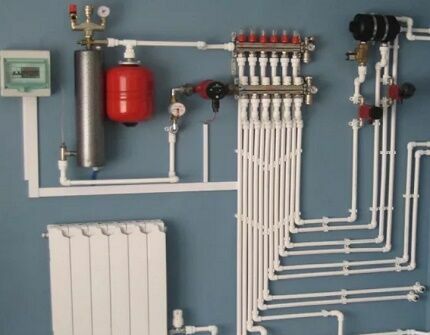
If there is no desire to calculate the required boiler power with high accuracy, you can use a simplified version. According to it, induction boilers with a power of only 3-4 kW are able to heat a room with an area of 30-40 m²
In order not to overpay for unnecessary power and not to freeze in case of its lack, it is necessary to evaluate the specific characteristics of a house or other object, including wall materials, window area, thermal insulation, etc., and on the basis of these data, choose heating equipment.
It does not hurt to ask the seller about the power factor, that is, the ratio of the active and total power of the selected model. This indicator is called the cosine of phi (Cos φ) and is measured in volt-amperes. It helps to determine what proportion of the consumed electricity is spent directly on heating the coolant, and what proportion is used to generate a magnetic field.
Power factor values are between 0 and 1. In well-designed induction boilers Cos φ is 0.97-0.98 kVA, which is considered an excellent indicator, since almost all the electricity consumed is spent on heating the working fluid.
A variety of models allows you to choose an option for use as a main or backup heat source. Powerful boilers operating on 380 V voltage are able to independently heat homes, commercial and industrial facilities of large squares.
Efficient for use in the country house or in the garage induction boiler you can make your own. The following article will acquaint you with a detailed guide to assembling a useful homemade product.
Conclusions and useful video on the topic
The video will clearly demonstrate the principle of operation of the induction unit:
Expert opinion on the safety of operation of an induction boiler:
Video presentations of induction boilers from ZSTM (Siberian Technological Machine Building Plant):
Induction heating boilers have many advantages and competitive advantages with minor or easily eliminated shortcomings. How profitable this option is for heating a particular house can only be decided by weighing all the pros and cons.
The indisputable fact remains the constant growth in demand for such equipment, and this trend is likely to continue in the future.
Do you want to talk about your own experience in the selection, installation, operation of an induction boiler? You have useful information on a topic that is worth sharing with site visitors. Please write comments, post photos, ask questions in the block form below.
